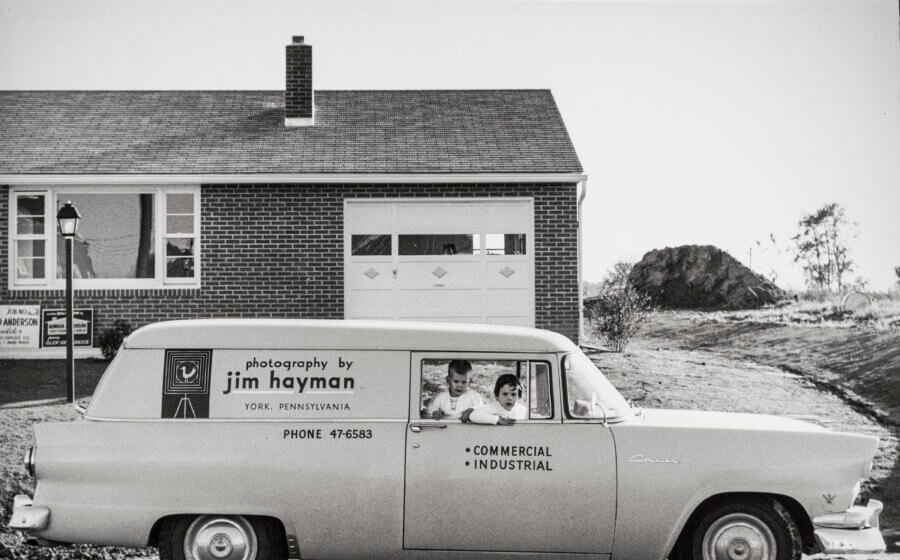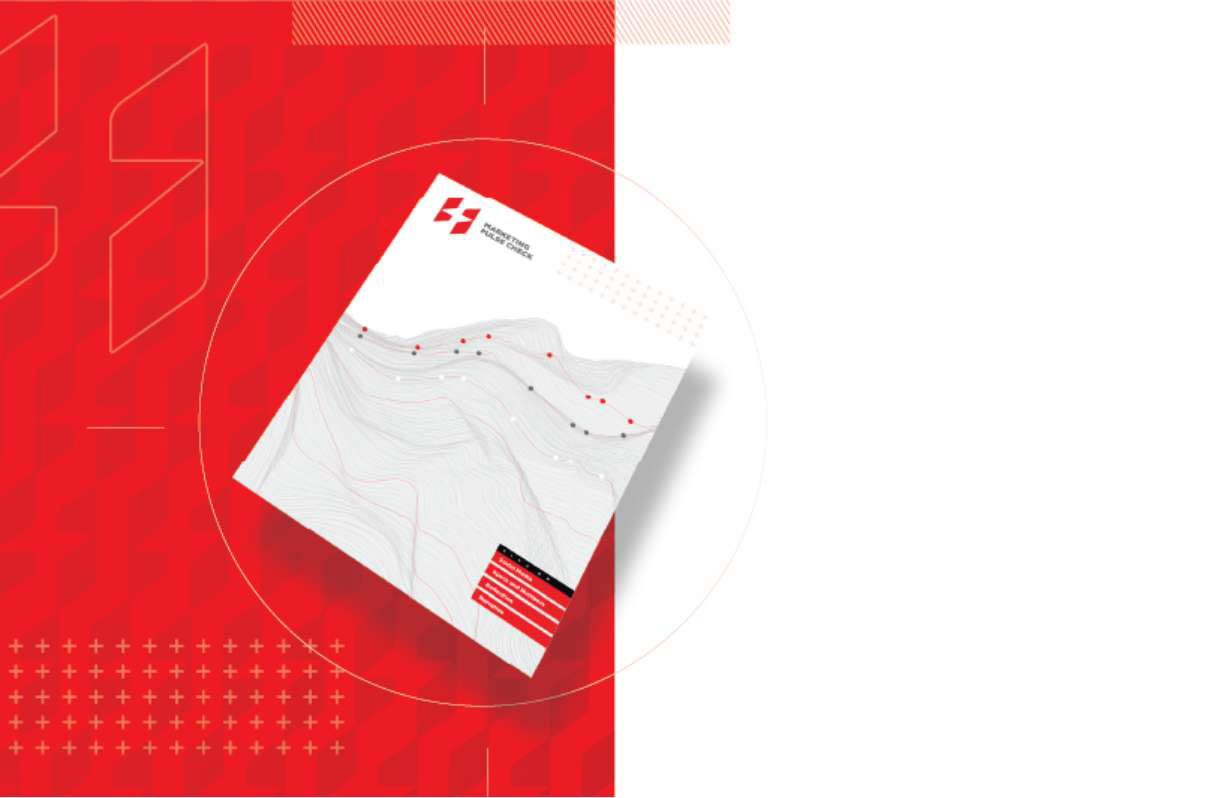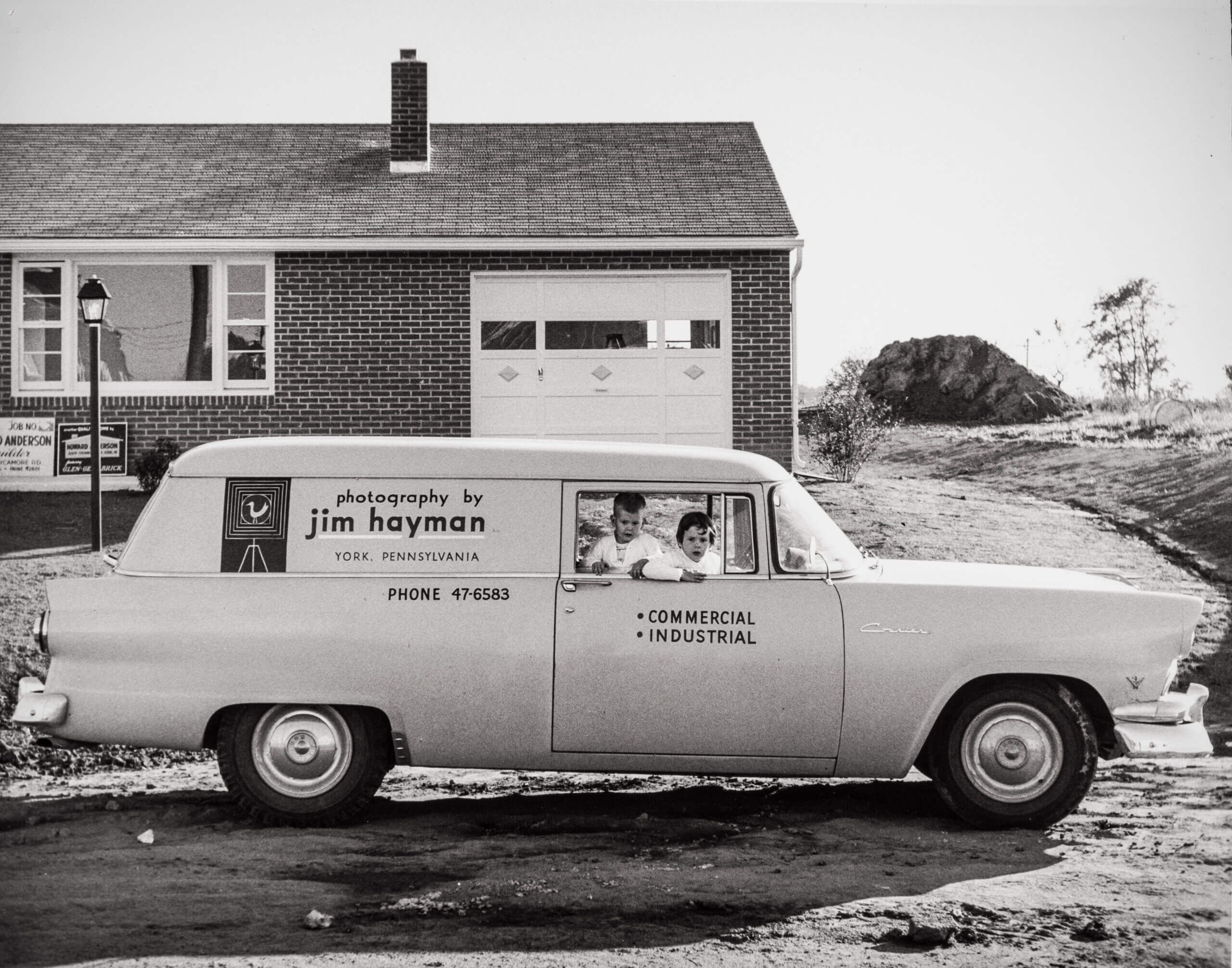
A Soaring Industry - Part 2: 1970s - 2000s
Advancements in photographic technology in the past 50 years: 1970s to 2000s
As we celebrate our 75th year in business, three generations of Haymans will be providing their take on how the industry, technology, and our services have evolved. If you missed part 1, you can read our founder, Jim Hayman Jr., talking about changes from 1946 to 1986.
Up next: Jim Hayman III’s perspective on change in the photographic world.
I grew up immersed in the Studio. I started working for my dad when I was 15. I worked in the lab, loading film, making black and white prints, cleaning up, whatever was needed. In those days (the late 60s and early 70s), we primarily worked in E-6 (transparency) and C41 (color negative). When I started driving, I would go in after school and process film until nine o’clock at night. The photographers loved that because when they came in the next day, all their shots were ready. They could lay them out on the light table for the client to review, who would be thrilled with the quick turnaround. From the start of the Studio, we always had an in-house lab. This allowed us to process our own film/shots. If we worked with a client in the morning, we could all go to lunch, and they could review their films/shots when we returned in the afternoon. No other studio in the area offered this service.

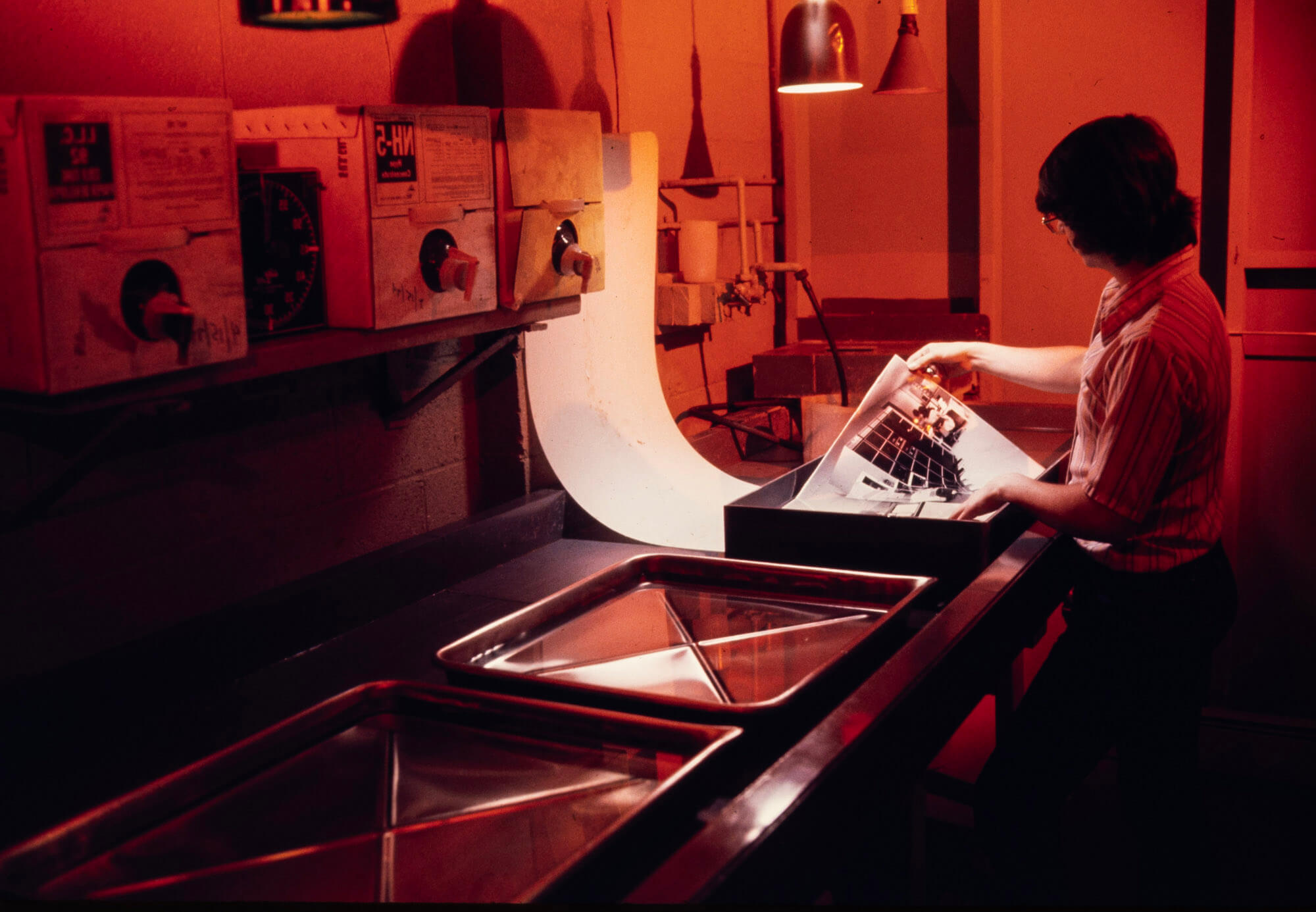
In the late 70’s and into the 80’s I continued to work at the studio in the lab. In the early 80’s one of the photographers left to start his own business, and he took another photographer from the team with him. My wife at the time encouraged me to step into a leadership role, and I finally moved out of the lab and began running shoots both in the studio and on-site. I spent the 80’s and 90’s working with my team to create amazing images and build the business. In those days a lot of our shoots were with ad agency professionals who would have ideas to explore, or they would know exactly what they wanted, in both cases it would be my job to create that image. Those were fun times; I traveled all over the country and photographed everything and anything you can imagine. This was all done on film and all shoots required lots of big heavy equipment – loaded into a van or lugged through airport terminals. As we moved into the 90’s we’d discover the equipment was about to get a lot smaller and lighter.

In the 1990s, digital photography came onto the scene. And at first, the digital cameras were prohibitively expensive, and the quality was not that good. In addition, people who were not trained as photographers, who had no idea about proper lighting and composition, suddenly had access to these fancy digital cameras. We lost clients, initially, because they would tell me, “I don’t need you, my CEO’s nephew has a digital camera – we can do this on our own.” Our switch from film to digital would be one of the biggest and challenging transformations the Studio would see – certainly in the first 40 years.
The Studio did not move to digital immediately, but we were able to offer many of the advantages that digital photography provided to our clients.
First, we prioritized delivering digital assets. While we continued to shoot 4×5 color transparency and develop in the dark room, we had huge flatbed scanners, and we would digitize the printed images. This allowed us to deliver both high-quality prints as well as high-resolution digital versions of our clients’ photographs.
In addition, we used Polaroid to test lighting, balance, and composition. To ensure we got perfect shots, the Polaroid allowed us and the client to “vet” the images before we exposed the film. Often, we worked with art or creative directors who would approve the shots, but some clients had no one to help them direct the design at all. So while some clients approached us with an extensive mock-up or detailed layout for their products, sometimes as the photographers we had to inhabit the role of designer, too – this trend has increased immensely in the last 20 years, Ryan now directs the majority of our shoots. We are now expected to be the art/creative director in most cases – which we prefer anyway. In either situation, we used a lot of Polaroid back then, the same way today you’d preview a shot on a screen.
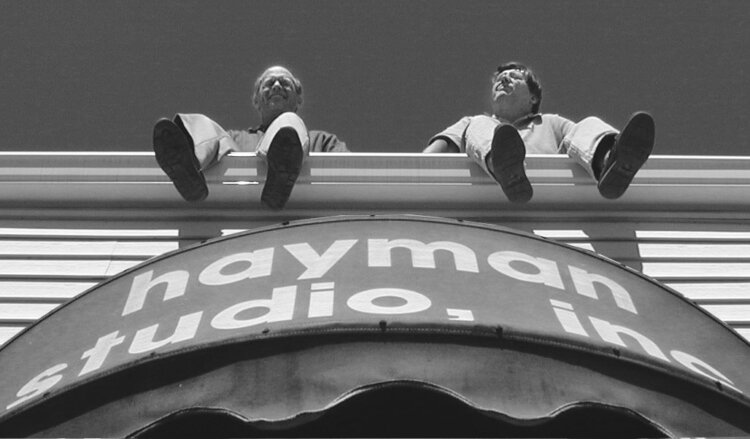
The first fully digital camera I purchased was an Olympus. The resolution was like 3 megapixels or something seriously terrible. You couldn’t blow any images up any larger than 5×7. Our first foray into a commercial digital camera system was a Kodak digital back for the analog Hasselblad camera body. The digital back essentially took the place of the traditional negative film holder. It attaches to the back of a camera just like our film backs, but it contains an electronic image sensor, converting a film camera to a digital one.
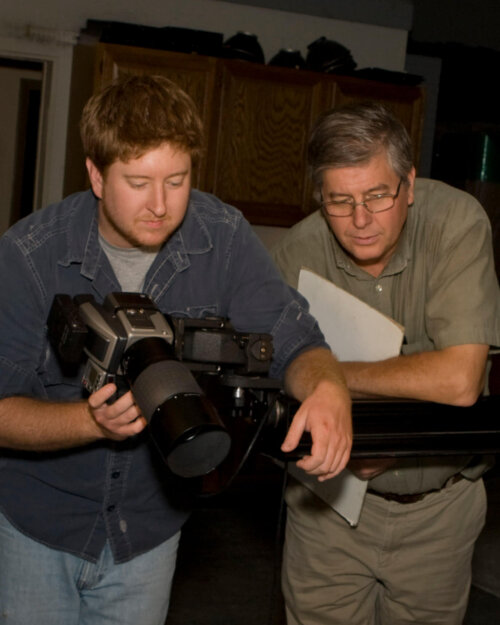
When Hasselblad came out with their fully digital H1 camera system, I had to have it. Ryan and I attended the PDN (Photo District News) show in NYC. While there, we visited the Hasselblad booth and for the first time saw the new digital Hasselblad system with a Phase One digital back – quality digital photography had finally arrived! Ryan and I talked about it the entire drive home. Even though at that time the studio couldn’t afford the $48K investment. I made the investment myself (as business owners do), loaning the money to the Studio so we could have the state-of-the-art equipment for clients. It was important to me that the Studio be able to offer our clients what no other photography studio at the time in Central Pennsylvania could offer. This new Hasselblad 22 megapixel digital camera system with a full suite of Zeiss glass lenses was the camera system for us and our clients.
The biggest advantage for our clients in moving to a fully digital system was time efficiency. No more waiting for the Polaroid or film to be processed; results were instantly on the computer monitor. This pace and the ability to produce results instantly had a major impact on our industry.
The introduction of digital cameras and images created the need for us to create a digital lab. At the time, our head of technology, Jay Evans, led the charge into the digital world. The Studio owes a lot to Jay. He identified and guided us on our path to digital workflow and processes. In the early 2000s, we had a great team doing digital lab work; Jay and my son Ryan were wizards in Photoshop. And they were fast, too. We had already been known for our really quick turnaround time for clients, and digital only increased our ability to turn projects faster.
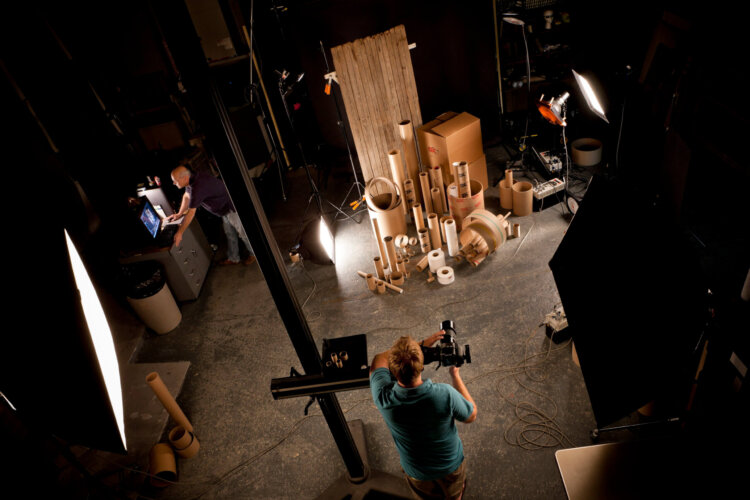
What’s really fascinating to me, looking back on the transition from film to digital, is that aside from the advancements in technology, nothing else substantially changed. I shot the same way with the digital camera systems that I did with film. I still had to design the shot, light it, and expose it properly. The important things about photography: texture, lines, color, shadows, light, balance… they are all the same.
And those clients who told us, “Hey, we don’t need you – our CEO’s nephew has a digital camera…” some of those clients eventually called us back. Those clients understood that photography isn’t about technology at all. It’s about thinking creatively, problem-solving, working with people, listening, understanding the difference between tungsten, strobe, and natural lighting – and how they all work together and need to be balanced. The way that color shifts. What constitutes a compelling image. How to manage people and personalities! Photography is not simply the technology or a medium that produces pictures. Photographs are created with skill and experience, with creativity. Photography is an art.
Jim Hayman III retired from the Studio in 2016 after a 40 year career working with hundreds of clients and capturing tens of thousands of images. His work can be seen for brands such as UTZ Snacks, Kinsley Construction, Pfaltzgraff, Thonet, VOITH, Cole Business Furniture, Herr’s Snacks, Dentsply Sirona, York Building Products, Hanover Lantern, York Casket, York Container, Graham Packaging, and many others. Jim now enjoys a quiet and relaxing retirement unless his three grandkids are around.



